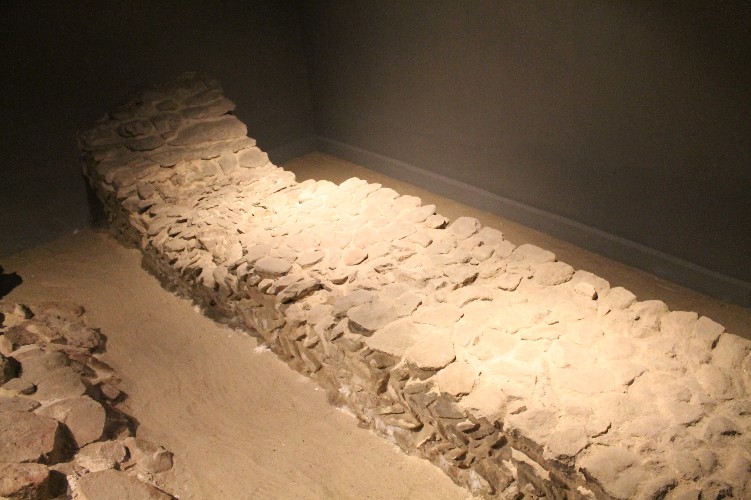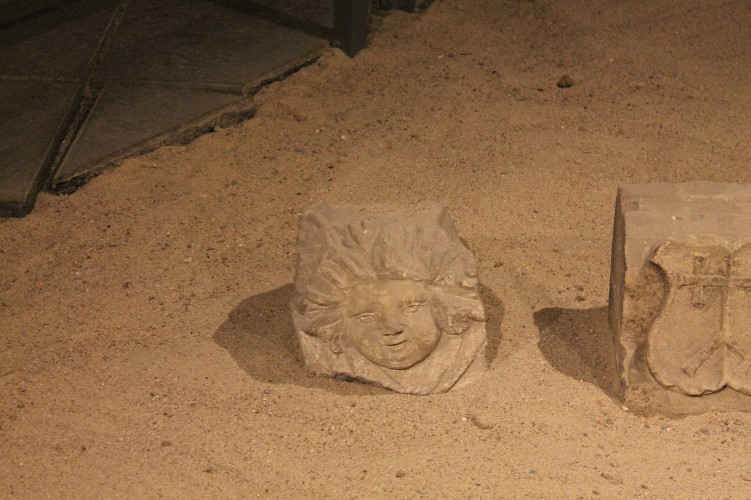Ancient pre-Poland
Poland has it all! Stone circles, hill forts, earth works. Stone circles aren't just found in Western Europe, (Britain, France, Spain, Corsica) as many maps purportedly represent them! And what of this old prehistory? We have fragmentary records.
Poland is a nation in a good and bad location. Its lands are rich but nesled between a Russia whom the Mongols had finally stopped oppressing, and an increasingly united Germany (Prussia), it struggled to survive. Periodic invasions wiped clean all the old records.*
The Ottoman Turks referred to Poland as Lechistan. Czeck people who have heard the story of the primordial Lech, Czeck and Rus, have asked me why Poland is not called Lechia, after its primordial founder who decided to stay where he was and settle, while Czeck went south and Rus went East, (from Viking lands?). It was called Lechia! But only for a time, a lost unknown time. It seems Lechs or Lechians may have been the Viking tribe who ruled the area briefly, as the Rus Vikings in Russia, whereas the greater population had a different name. The first Polish king in historical sources is Boleslaw the Brave, becasue he was crowned as a King by the twenty year old Otto of Germany, who wanted a loyal vassal and ally to the east. Before this, `Poland', in the Poznan area, (Great Poland), was but a dutchy or principality, for an unknown time. Another principality appears to have been located to the south east. The capital was Cracow and this nation was called Vislania. It may have been ruled by remnants of the Vandals. The people were Polish speaking. Since it was a separate kingdom or princedom, for this reason, I believe it was later called `Small Poland', a name the area retains today. (Alternately `lesser, or small Poland' means `Second Poland', with Greater Poland around Poznan being `First Poland'.) The first Polish kings are buried at Poznan. After Czeck raids ruined the Gniezno/Poznan area, the capital was quickly shifted to Cracow, seat of `Small Poland', where it remained for centuries.
Poland is older than we know
How old is it? Well, Biskupin, built in about 800BC appears to have been a river fortress which may have been collecting tolls on river traffic to and from the Baltic. I noted that Biskupin is LESS THAN 80km from the alleged first capital of Poland, in 840 AD, Giecz, now a village of 140 people where one can find a beautiful hill fort. To give an idea of how big Giecz once was, the chronicle of Gallus Anonymous talks about the polish order of battle under Boleslaw the Brave. Wroclawek provided him with 800 knights, 2000 shield bearing men. Giecz provided him with 300 knights, and 2000 shield bearing men. The larger cities of Poznan and Gniezno respectively provided him with 1300/4000 and 1500/5000. The army which controlled Poland, about the size it is today, was therefore reckoned at 16900 men. In addition there may have been mercenaries. The chronicle also states that a hundred of the knights are worth a thousand regular soldiers.
That's not all. It appears Mediterranean peoples have been very interested in Poland from very early times. Their interest is as old as the amber trade. The Baltic is unique in that Amber washes up on its shores and people merely need pick it up and sell it to a jeweller. This amber trade with the near East is over six thousand years old.
That's not all. The city of Olkucz, near Cracow, is said to have been a Phoenician settlement. Its etymology is phoenician and means `to chisel'. This puts its foundation in at least 500 BC. Since Cracow was the center of Vislania, however, Cracow too may have existed in this time. We do not know.
We do know that Claudius Ptolemy's map of the world in the second century AD contained a city called Callista. This appears to be the modern city of Kalish. There are other cities on his map which may correspond to Polish settlements today but their names are different. A lot can change however. Look at Giecz. A thousand years ago it was a major Polish city supplying thousands of soldiers to Boleslaw's armies. Today it is a village of 140.
More evidence for early civilization: Herringbone wall foundations I noticed in the crypt of a cathedral in Poland. The information provided was that these are `pre Romanesque' and are a `puzzle'. Similar walls can be found in England... guess where... near the tin mines in Cornwall! Phoenician and previously, Minoan traders would have desired the tin from these areas. In Poland, was it amber that foreign traders sought? We don't know who built the Herringbone walls.
Ancient sites
I could not list them all if I tried but I will talk about a few.
Hill forts
Wow! Poland has them in droves! The Celtic culture (The word means Gaulic and refers to the Halstadt Culture which conquered Europe, emerging out of central southern Europe), was active in Poland in early times. Celts lived in hill fortresses and their distinctive amulets and broaches are found in archeological digs.
The best hill forts are in the Cracow area, the old kingdom of Vislania. (This southern area was also known as White Croatia for a time during the Early Middle Ages. Croatia/Cracow: A connection?). The Vistula river was the center of Poland. Like the Nile for Egypt, the Vistula has always been Poland's lifeblood. Different kingdoms have been centered on different parts of it. In the North, the Teutonic Knights built Malbork to strangle the Baltic trade. In the center, Great Poland of the Poznan area emerged a thousand years ago, when Germanics was weak in this region, and centered more in the France/Charlemagne area. In the South, Vislania dominated the Vistula, and here, we have the most famous earthworks!
The Tombs of Miezko and Boleslaw the Brave, the first kings of Poland, from a thousand years ago, are found in Poznan. They are found on the Osttov Tumski, or Cathedral Island, which was originally an impregnable stronghold surroudned by water. Unfortunately it was not so incredible and Czecks raided the tombs, destroying them. (They took the treasure). Afterwards the capital of Lechia/Poland was shifted to Cracow.
Here are the tombs of Miezko the First and Boleslaw the Brave. Their bodies were probably destroyed during a war with Czecks.

There are curious Herringbone style walls which surrounded the tombs and which I was happy and surprised to see. According to the museum information, these are a puzzle for scholars and belonged to a pre-Romanesque building which was built around the Nave. Is this likely? Other Herringbone walls may have been demolished when the later churches were built. Herringbone walls were also built by the Normans in England, (Northmen) who had been living in France for a century or so. Could the walls then be Viking ruins? I am thinking this is a Viking-style church and the Herringbone architecture was `Lechite' although this is difficult to prove as there is little to compare it with The alternate name for Poland in this time was Lechia. The people however were still Poles, Slavs. Lechites also lived in the Poznan area and early Poland is essentially the same territoriy. Lechites are considered Slavs by most sources but they also have Germanic associations in old epics. They are perhaps comparable to the Rus, (Vikings) who mixed with the Slavs there, becoming the Russians. (What was Russia called before the Rus arrived?)

Always looking out for pagan details... Like in the Norman Church in a Harry Potter village in England, (Castle Comb or Lacock?), this too seems to have had a little `grotesque' of Apollo. It's either that or a Cherub, but i'm going for Apollo due to the hairstyle. The circular face is a possible representation of the solar disk. He would likely have been attached to a later romanesque church from the time of the High Middle Ages. He may have been on a ceiling near an entrance. The current church is a later Gothic style.


"Ok it's creepy i'm getting outa here!" To my left is the tomb of Boleslaw the Brave, one of Poland's greatest kings, under Poznan Cathedral. Behind is the tomb of Miezco. These were placed between the altar and baptistry in an original tiny church. The Poznan area is where the Lechites established the Polish state. Boleslaw was given the Sword of St Maurice, (possible Spear of Destiny/Sword of Longinus), by Otto III as a coronation present. This is currently on display at Wawel. I was really awed to be here and thanks to my family in Poland for showing us everything!
--------------------------------------------------------------------
* In Ireland, a place which is hard to invade, we have a history going back to almost 3000 BC, and it is accurate with its years according to the science of tree rings. But don't take my word for it. See `From Exodus to Arthur'. Poland too had a story going back this far, but we really don't know what happened. We don't have stories of invasions going back thousands of years, as in Ireland, only ruins.
Powered by FolderCMS



